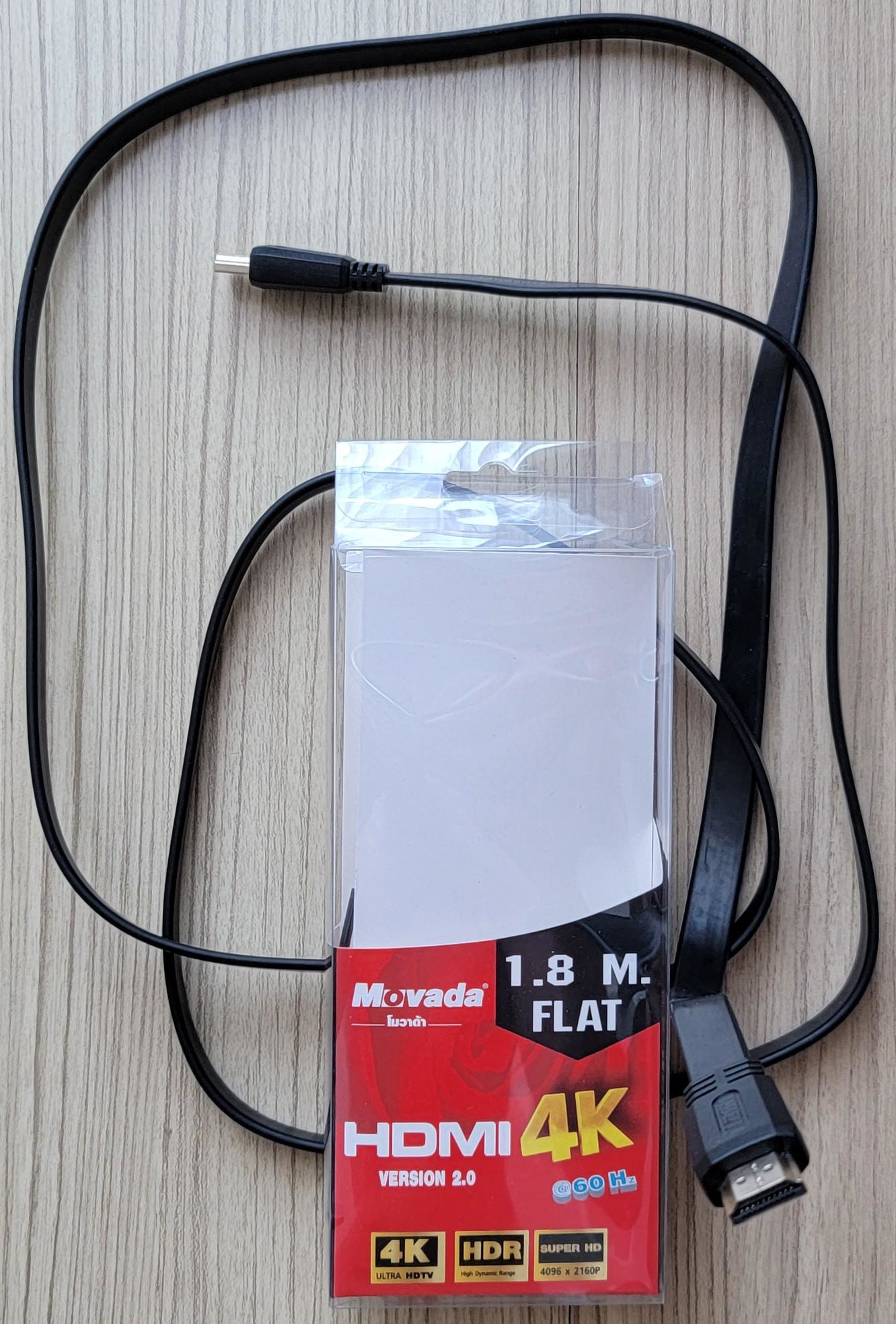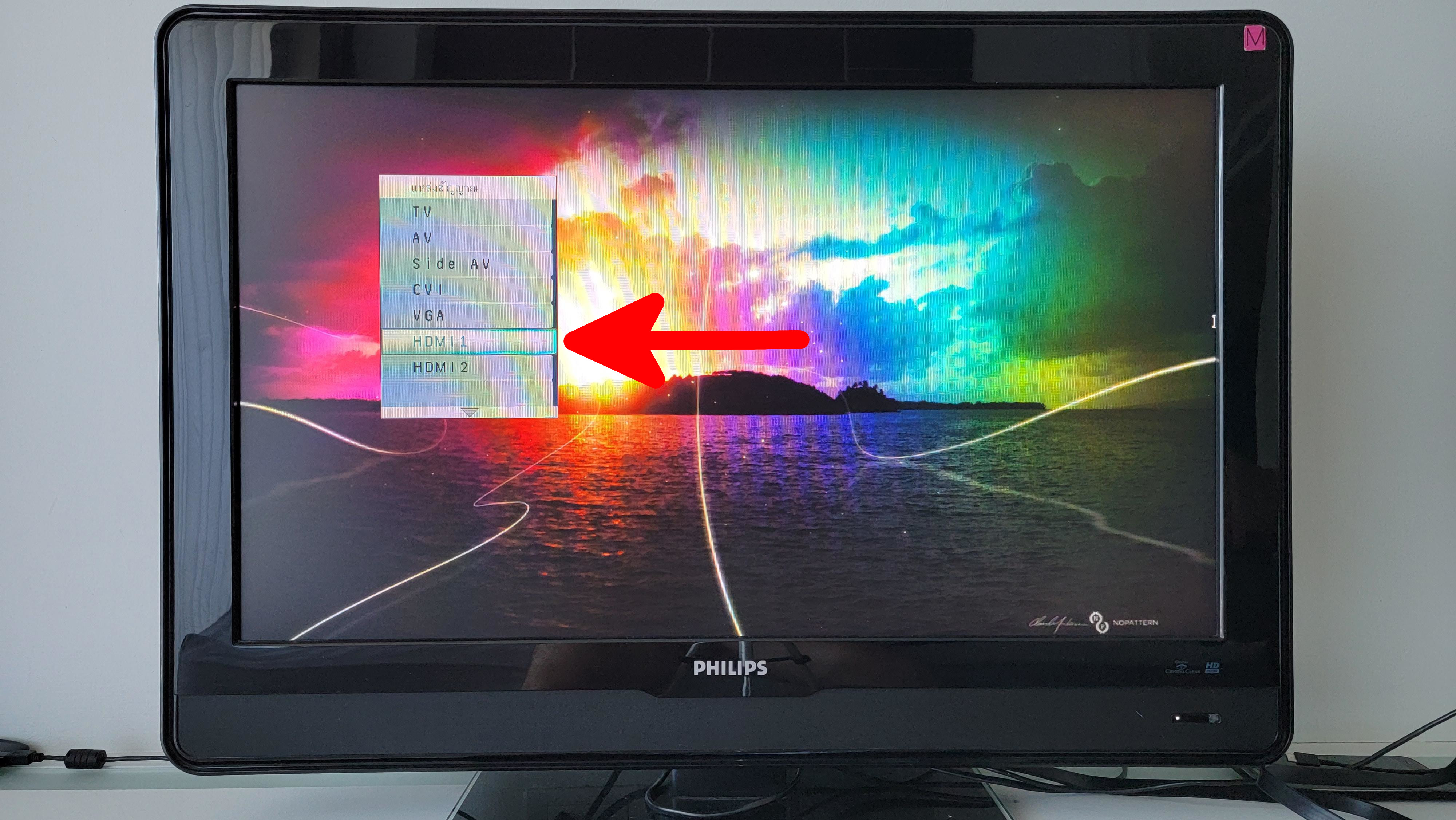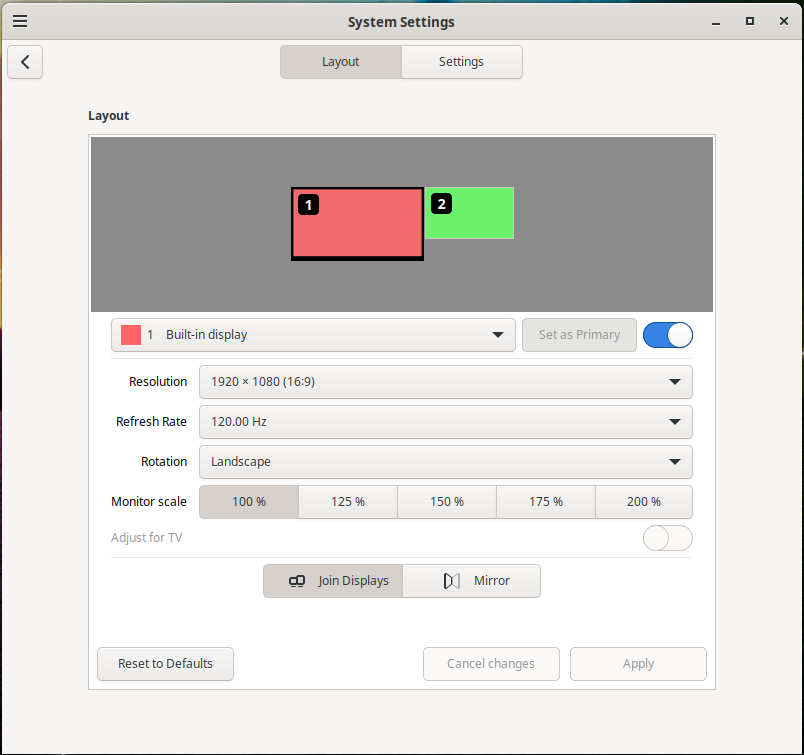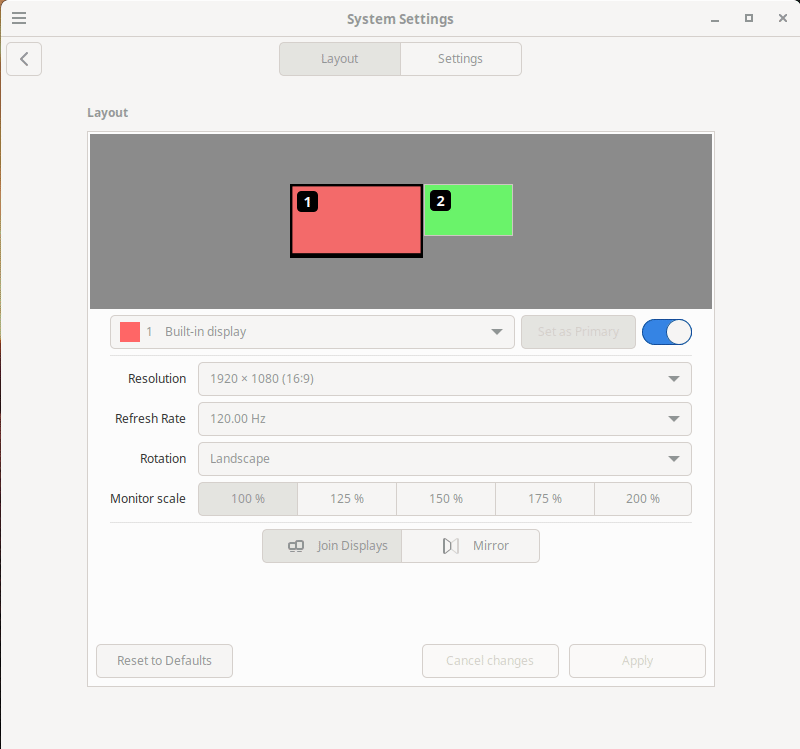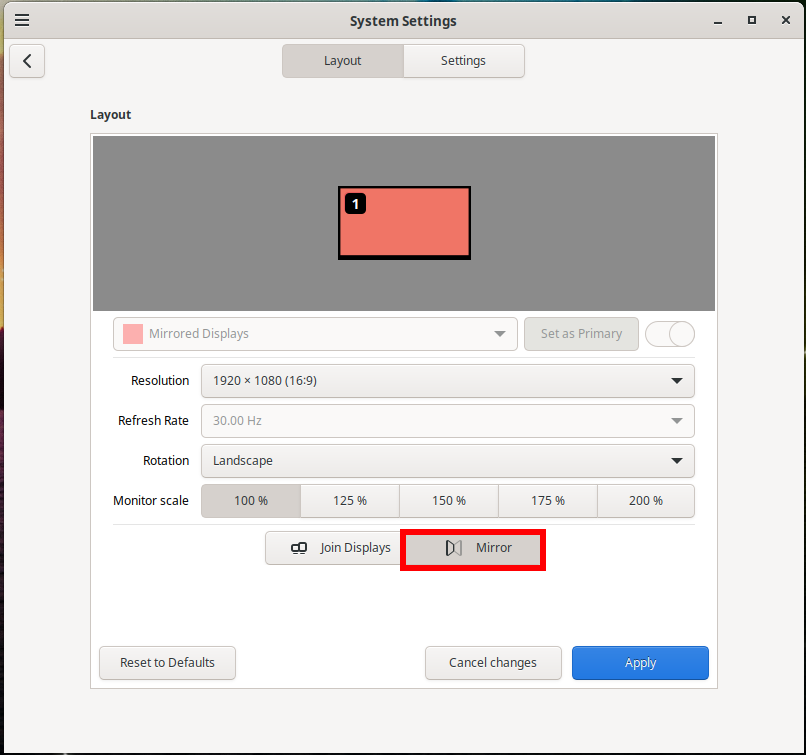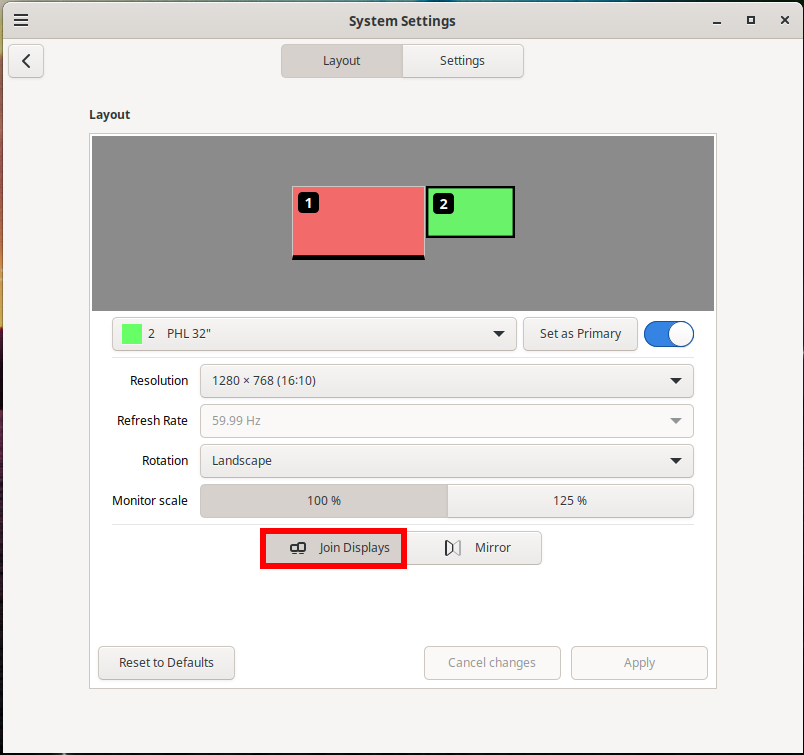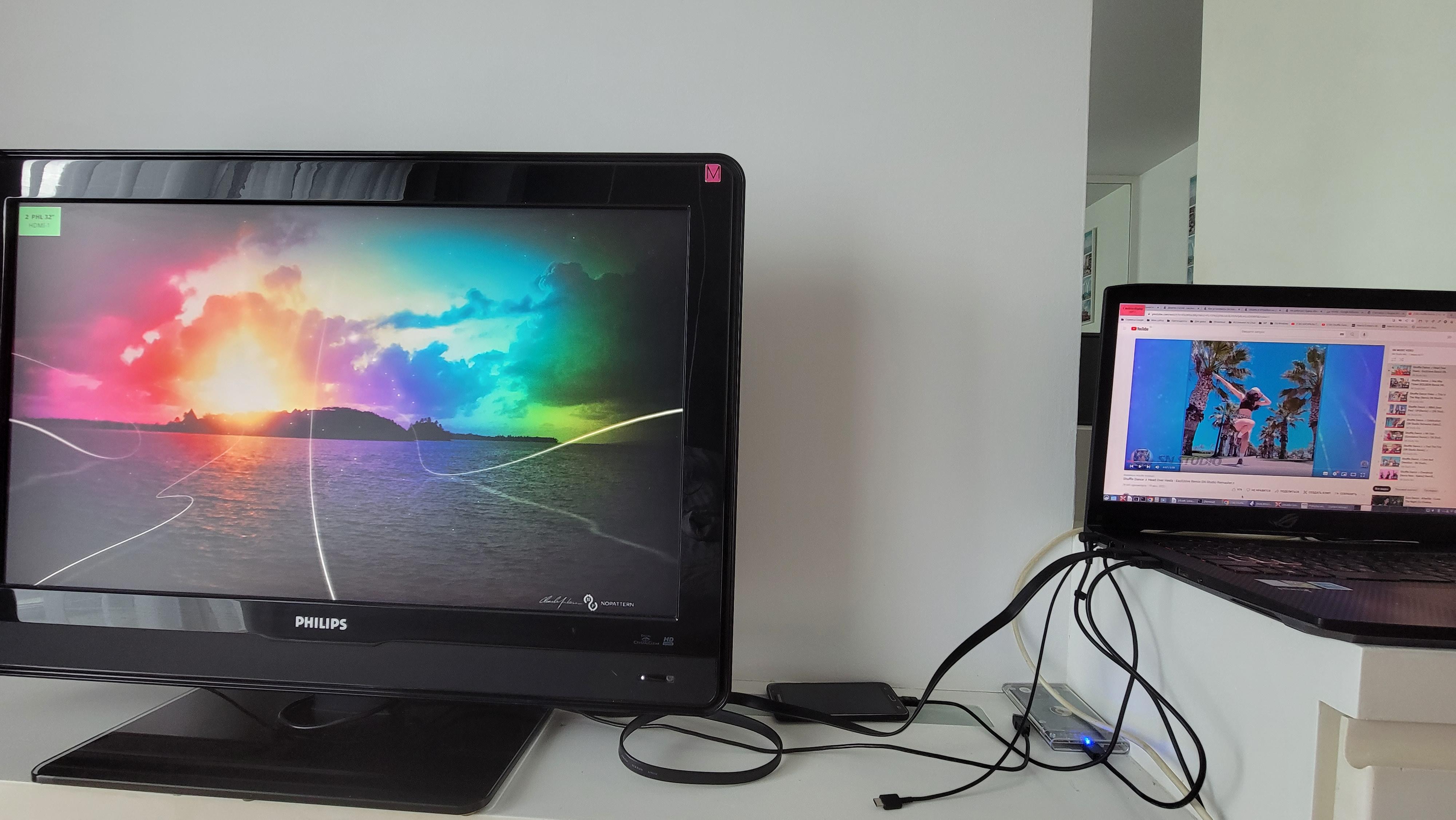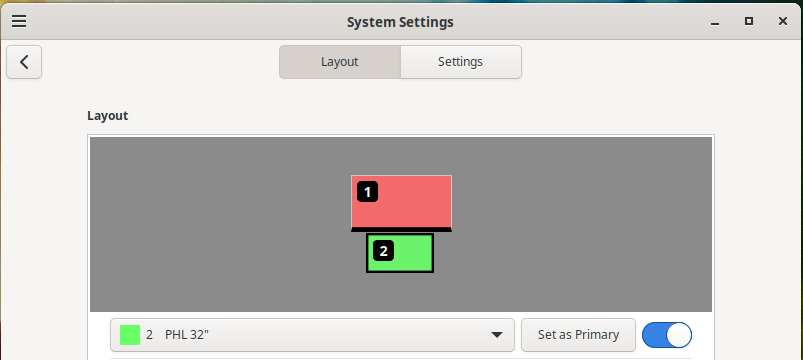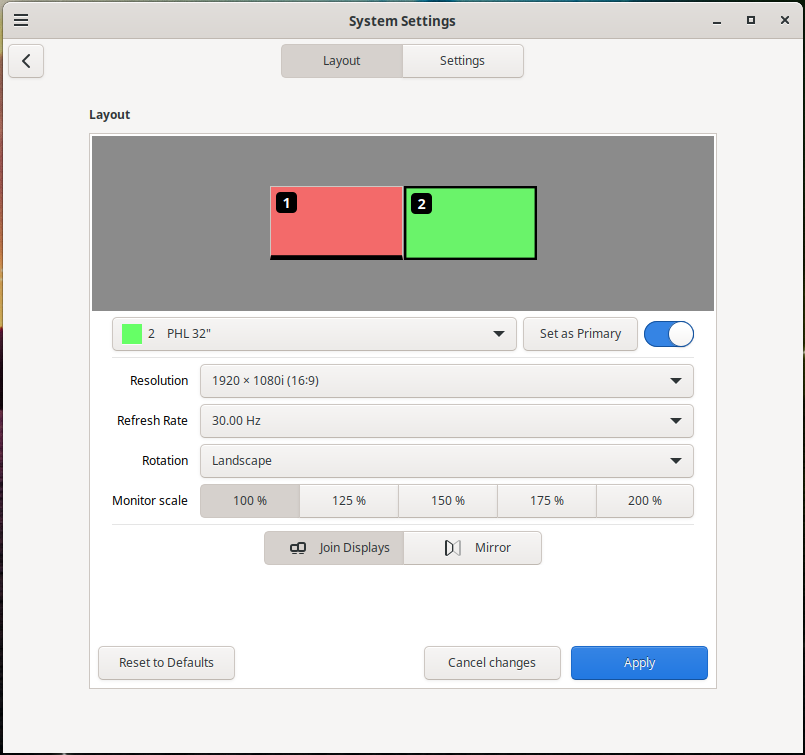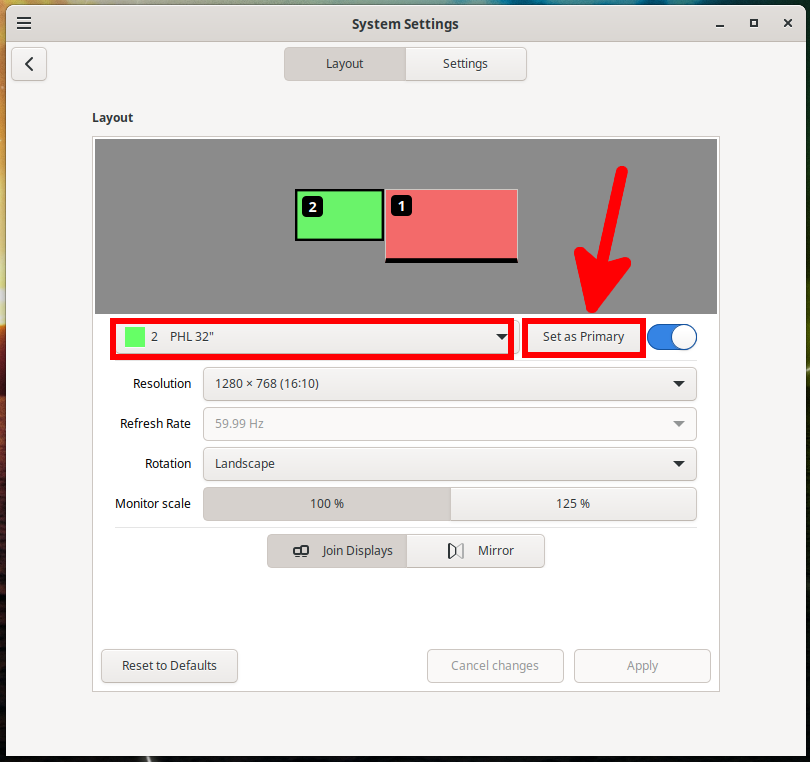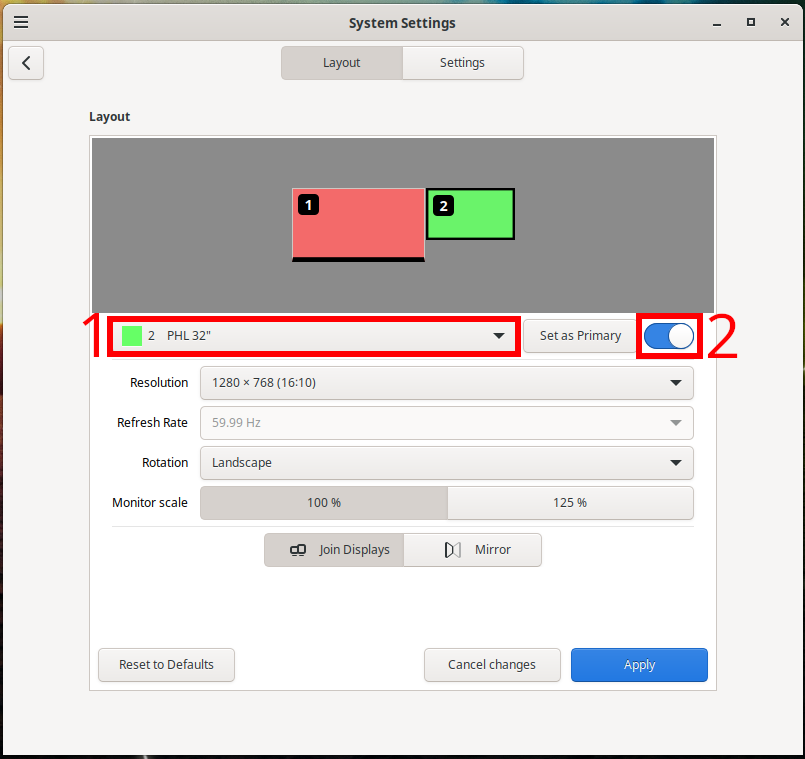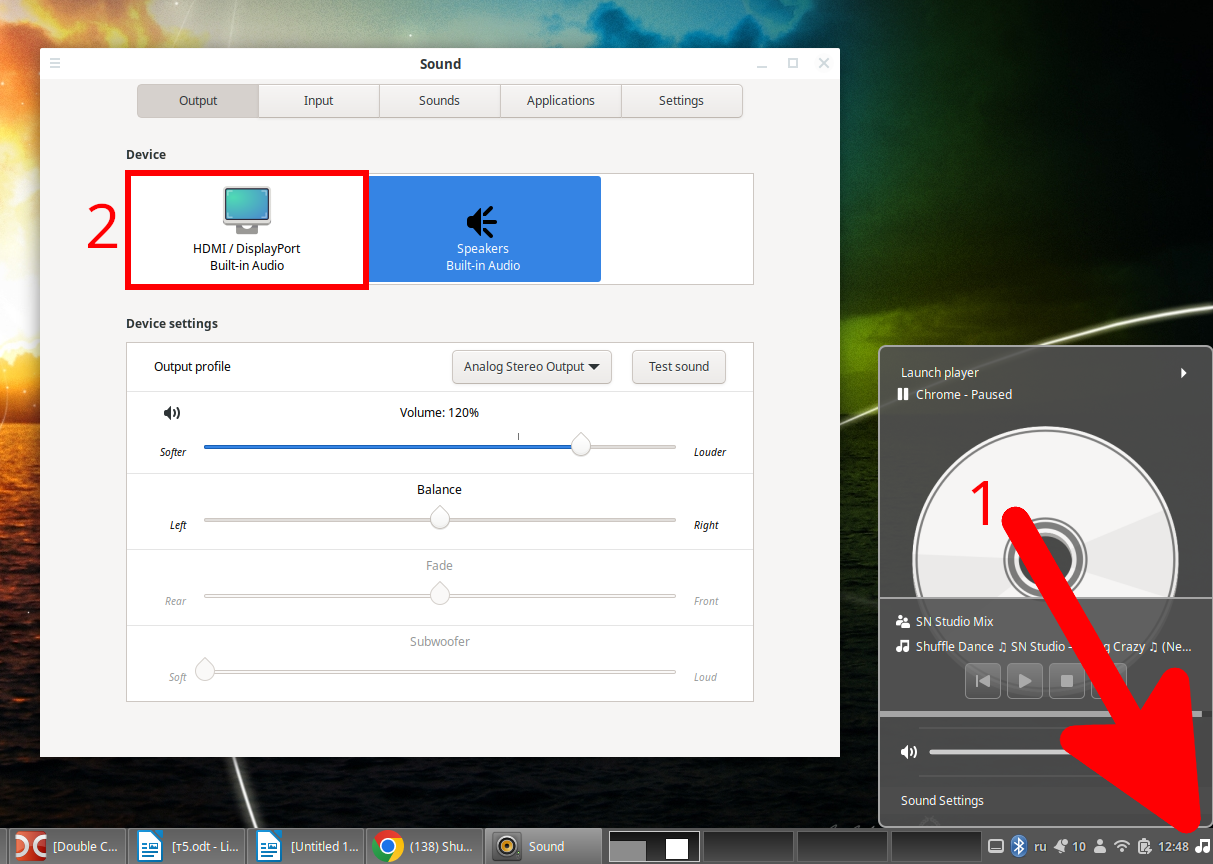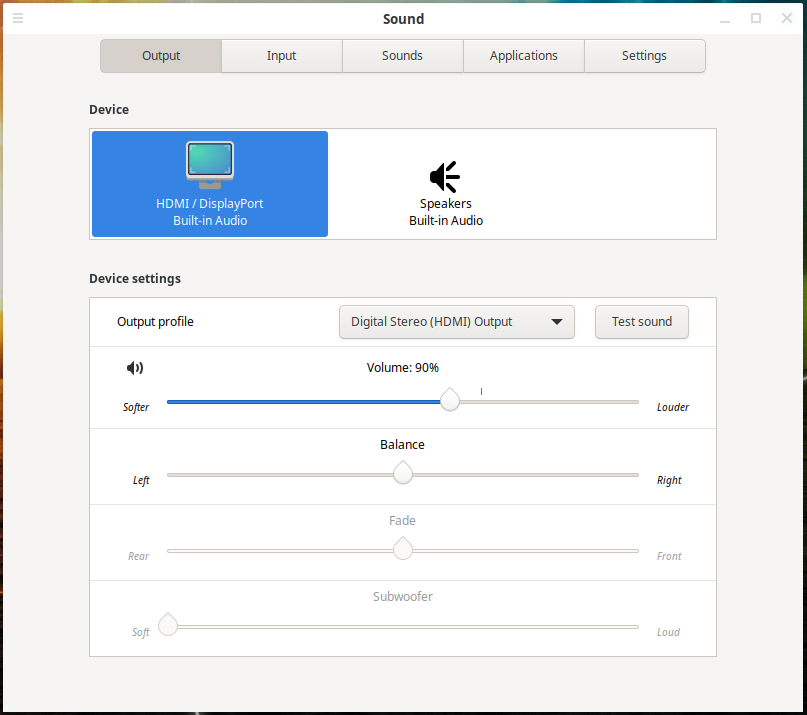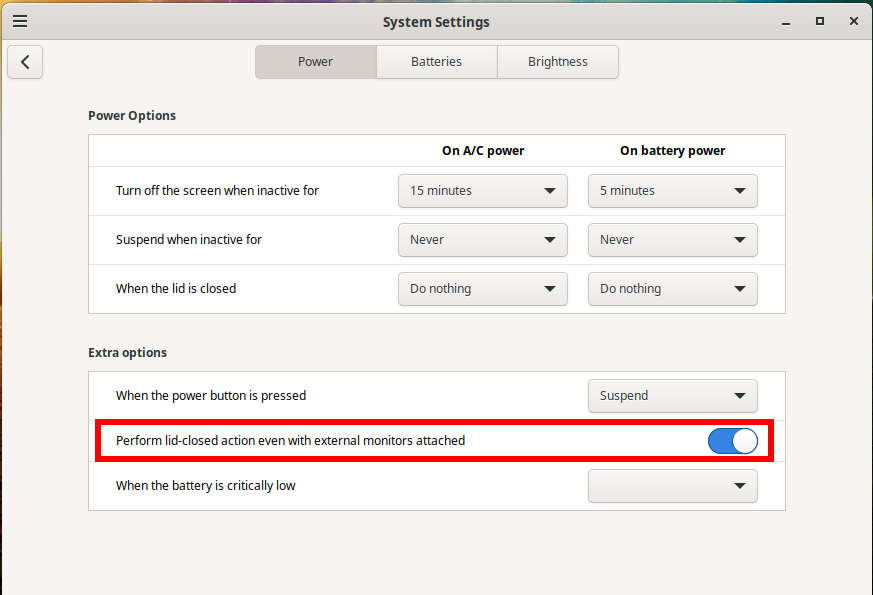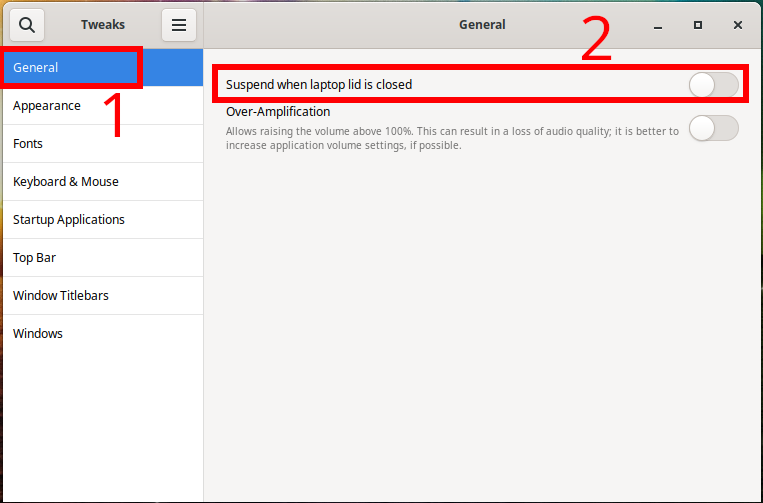
How to connect a TV to a computer in Linux in Cinnamon (Linux Mint, LMDE)
June 23, 2022
Is it possible to connect a TV or a second monitor to a computer in Linux
This post will show you how to connect a TV or a second monitor to a Linux computer with the Cinnamon desktop environment. It will also talk about the available settings and solutions to typical problems that arise when connecting a TV to a computer.
Cinnamon is used in distributions such as Linux Mint and LMDE, and the Cinnamon desktop environment can be installed on any other distribution. In my case, I'm using Arch Linux with Cinnamon.
If you have a different desktop environment, then see the articles:
- How to connect a TV to a computer in Linux in Xfce (Kali Linux, Xubuntu)
- How to connect a TV to a computer in Linux in GNOME (Ubuntu)
If you are a Windows user, then see the article “How to connect a TV to a computer in Windows 11”.
What you need to connect a TV or an additional monitor to a computer
To connect a TV or a second monitor to a computer or laptop, you need:
- TV with HDMI connector (all modern models) or monitor with HDMI connector (all monitors released in the last two decades)
- a computer with an HDMI connector – almost all computers and laptops will fit
- HDMI cable
Choosing an HDMI cable
I approached the choice of HDMI cable quite simply – I chose the cheapest with the right length, which I found in the store. In subsequent use, this cable fully satisfied my needs.
Despite its cheapness, this HDMI cable supports:
- UHD 4K@2160P / 4K@60Hz / 4K HDR
- High Speed HDMI 2.0
- Gold plated contacts
Cable length 1.8 meters.
Apparently, these are already the minimum characteristics – perhaps more expensive models support higher resolutions and data transfer at higher speeds.
What TV can be connected to a computer
Using an HDMI cable, you can connect any TV with an HDMI connector. This connector is present on all TVs and monitors released in the last decade.
Older TVs without an HDMI connector can also be connected to a computer, but instead of an HDMI cable, you will need a wire with an adapter.
As for the technical characteristics of the TV (diagonal size, screen resolution, screen refresh rate, aspect ratio), this is not critical. That is, you do not have to select a TV model with the same characteristics as your monitor. Modern video cards support a variety of modes (screen resolutions and refresh rates), including the video card will work with a TV if the screen resolution is different from the monitor.
For example, the characteristics of my devices:
- laptop monitor: 17", 1920×1080, 16:9, 120 Hz
- TV (all specifications): 32", 1366x768p, 16:10, 60Hz
That is, these are two very different devices, but at the same time I had no problems when they worked together.
How to connect HDMI cable to TV
Plug the HDMI cable into the connectors of the computer (laptop) and TV.
Both on the computer and on the TV, there may be several HDMI connectors – remember the number of the selected connector.
Turn on your computer and TV.
Note: The HDMI cable can be connected when the computer and TV are already on.
Use the remote control to select “HDMI” as the input source on the TV.
If, after selecting HDMI as the signal source on the TV, you see the message “No Input Signal”, then:
- Select HDMI with a different number.
- Move the wire, it may not be firmly connected to the computer or TV socket.
- Make sure your computer is on.
- The monitor on the computer should not be turned off due to inactivity.
How to use a TV connected to a computer
There are two main modes:
- join displays
- mirror (duplication) of images on both displays
When displays are combined, the total space expands. That is, if you connected another 1920×1080 display to a computer with one 1920×1080 display, then now the resolution of your virtual screen becomes 3840×1080, if there are three such displays, the resolution will become 5760×1080. You can drag program windows from one display to another. Some apps and games support these wide virtual screens.
When the image is repeated (Mirror), the same image will be shown on both displays.
Among the displays, Primary stands out. This is the one connected first. A feature of the main display is that it shows desktop shortcuts, although this can be changed in the settings.
In the next video, the TV is connected to the computer. To play a YouTube video on a TV, the web browser window is dragged from the monitor to the TV. It also selects HDMI as the audio output source to play the sound on a TV instead of playing it on a computer (laptop).
Where are the settings for the second display and TV
Open the Settings application (System Setting), go to the “Display” section.
Here you will see the display settings.
Select the display (or TV) you want to customize.
Each display will have its own set of settings.
How to make the TV show the same thing as the monitor
Go to System Setting → Display.
Select the “Mirror” option.
As a result, the resulting settings for both monitors at once will be shown.
How to make the TV become an extension of the monitor
Go to System Setting → Display.
Select the “Join Displays” option.
In this case, one of the monitors will be considered the main (Primary) one. In this case, each of the monitors will show its own desktop, which, in fact, is one.
Why can't I drag the program window to the second screen
If you see two displays in the settings, but you can’t drag the program window to the TV or the second display, then try dragging the window to the other side. That is, if you, for example, are trying to drag a program window to the left side, then try dragging it to the right side instead.
The fact is that the physical location of the second monitor (TV) and its location in the settings can be different. To fix this, swap the monitors in the settings:
In addition to the location of the monitors to the left and right of each other, other options are possible.
You can place one of the monitors (or TVs) above the other.
In this case, the screen resolution and desktop area will change accordingly.
If you have many monitors, you can place them however you want, not all monitors need to be in a straight line horizontally. You can arrange them, for example, as 3×2, that is, two rows of 3 monitors.
Why are monitors of different sizes in the settings
If monitors have different screen resolutions, then they will be shown in different sizes in the settings.
Is it necessary to set the same resolution for the monitor and TV
No, it doesn’t need.
Moreover, the TV or monitor may not support the resolution or screen refresh rate that the second monitor supports.
For example, if you have selected a screen resolution of 1920×1080 in the TV settings, but the TV itself only supports 1366×768, then the picture will be displayed with a resolution of 1366×768 anyway.
How to install the Primary monitor
By default, desktop shortcuts are shown on the Primary monitor. You can change, i.e. choose a new primary monitor. For this:
1. Open the System Setting app, go to the “Display” section.
2. Select the monitor you want to make your primary
3. Click the “Set as Primary” button next to the monitor name.
How to turn off the display or TV in the settings, without physically disconnecting
You can disconnect the HDMI cable from your TV or computer at any time, but this is not always convenient. In addition, you may want to turn off the computer monitor or the laptop's built-in monitor.
To turn off any monitor or TV in settings, open “Display” settings.
Select the monitor you want to turn off – this can be done by clicking on the schematic image of the monitor with a number or by selecting the name of the monitor from the drop-down list.
Then turn off the monitor using the slider marked 2 in the screenshot.
A disabled monitor will stop working (it will no longer receive a signal), but the disabled monitor will still be available in the settings. You can turn it back on at any time.
Why does the sound come through a computer (laptop), and not through a TV
Go to sound settings (Sound). This can be done via System Setting → Sound. Or by clicking the musical note icon next to the clock and selecting “Sound System”.
Go to the “Output” tab.
Select “HDMI / DisplayPort Built-in Audio” as the output device.
Why did the sound disappear after turning off the TV
Go to sound settings (Sound). This can be done via System Setting → Sound. Or by clicking the musical note icon next to the clock and selecting “Sound System”.
Go to the “Output” tab.
Select “Speakers Built-in Audio” as the output device.
How to make the TV (on the second monitor) also show desktop icons
Go to System Setting → Desktop.
In the “Desktop Layout” drop-down menu, select the option you need:
- No desktop icons
- Show desktop icons on primary monitor only
- Show desktop icons on non-primary monitor(s) only
- Show desktop icons on all monitors
Setting the action when closing the laptop lid when using a second monitor
Go to System Setting → Power Management.
Here you can change the behavior performed when the laptop lid is closed.
In order for the action selected when closing the laptop lid to be applied even if a second monitor is connected, activate the “Perform lid-closed action even with external monitors attached” setting.
When connecting and disconnecting the TV, the next time you close the lid of the laptop, the monitor goes into sleep mode
On my laptop, the lid close action is set to Do nothing. This setting works fine, that is, when I close the lid of the laptop, the computer continues to work.
But when connecting and disconnecting the TV, the following problem was noticed: when the lid is closed, the laptop goes into sleep mode (Suspend), although the settings are set to “Do nothing”.
This looks like a bug. To fix it, install the “gnome-tweaks” package.
Run:
gnome-tweaks
On the “General” tab, find and disable the “Suspend when laptop lid is closed” setting.
Disabling this setting resolved the issue.
Related articles:
- How to connect a TV to a computer in Linux in Xfce (Kali Linux, Xubuntu) (78.9%)
- How to connect a TV to a computer in Linux in GNOME (Ubuntu) (78.9%)
- How to run multiple instances of an application from the Panel in Cinnamon (71.1%)
- How to translate Linux with Cinnamon into my language (71.1%)
- How to manage VPN Settings in Cinnamon (67.1%)
- How to download a package without installation in Arch Linux and Manjaro. How to download the AUR package source code (RANDOM - 50%)
